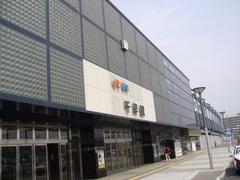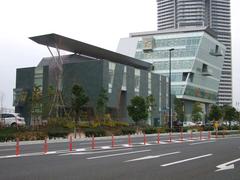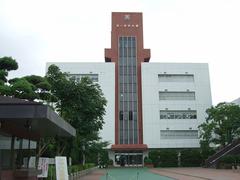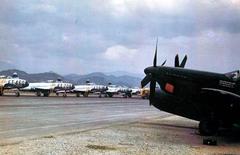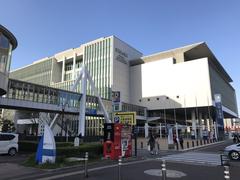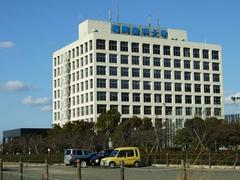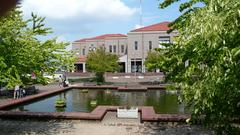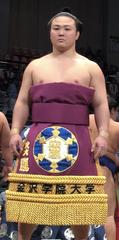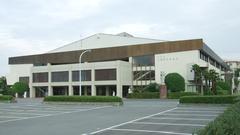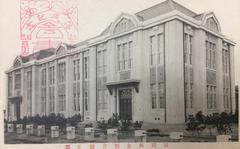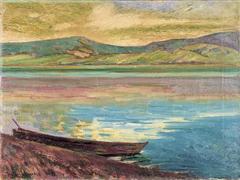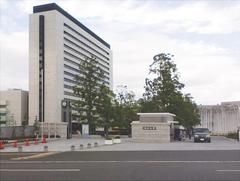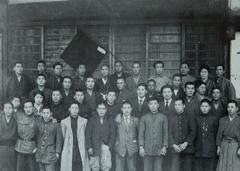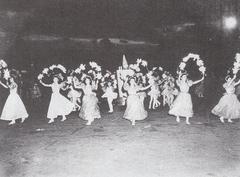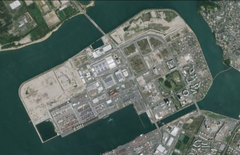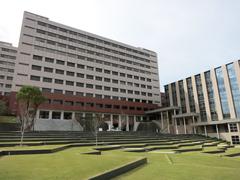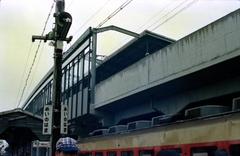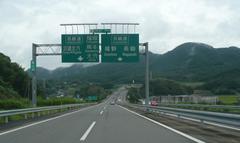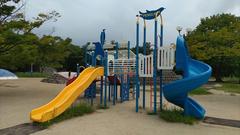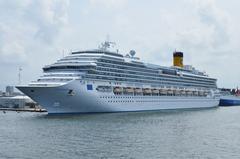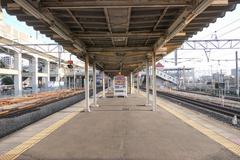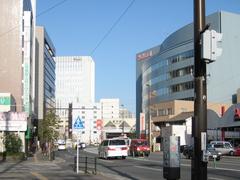Imajuku Station Visiting Hours, Tickets & Travel Guide – Fukuoka, Japan
Date: 04/07/2025
Introduction
Imajuku Station (今宿駅, Imajuku-eki) is a major railway hub in Nishi-ku, Fukuoka City, operated by JR Kyushu on the Chikuhi Line. Since its opening in 1925, the station has served as a crucial link between western Fukuoka’s suburbs and the city center and is a gateway to natural destinations like the Itoshima Peninsula. With its strategic location approximately 13 km from central Fukuoka and seamless transfers to the Fukuoka City Subway Kūkō Line via Meinohama Station, Imajuku Station makes exploring Fukuoka’s urban, historical, and coastal attractions easy for commuters and tourists alike. This detailed guide covers visiting hours, ticketing, facilities, accessibility, travel tips, and nearby attractions to help you plan your journey.
(JR Kyushu Official Site), (Fukuoka City Subway), (Fukuoka Now)
Table of Contents
- Introduction and Station Significance
- Historical Overview
- Visiting Hours & Ticket Information
- Facilities & Accessibility
- Key Travel Tips
- Nearby Attractions & Seasonal Events
- Transportation & Regional Connections
- Frequently Asked Questions (FAQ)
- Summary & Conclusion
- Sources
Historical Overview
Established in 1925, Imajuku Station was initially part of the private Kitakyushu Railway and joined the Japanese National Railways before becoming a JR Kyushu station after the JNR privatization in 1987. The electrification of the Chikuhi Line in 1983 enabled efficient through-services with the Fukuoka City Subway Kūkō Line, enhancing regional connectivity and boosting both commuter and tourism flows. (Wikipedia - Chikuhi Line), (Fukuoka City Subway)
Visiting Hours & Ticket Information
Hours of Operation
- Station Building: Open daily, approximately 5:00 AM to midnight
- Ticket Office (Midori no Madoguchi): Staffed during peak hours; check current hours on the JR Kyushu Official Site
Ticketing Options
- Automated Ticket Machines: Multilingual, support cash and IC cards
- Midori no Madoguchi Counter: For complex journeys, reserved seats, and rail passes
- IC Cards Accepted: SUGOCA, nimoca, Hayakaken, and other regional cards, providing seamless transfers across JR, subway, and bus lines
- Tourist Passes: 1-day, 2-day, and 7-day Fukuoka City Subway Passes, as well as the JR Kyushu Rail Pass for unlimited rides (World of Metro)
Facilities & Accessibility
Station Layout
- Platforms: 1 island platform, 2 tracks at ground level
- Footbridges: Two, with one fully equipped with elevators for barrier-free access
- Waiting Areas: Sheltered seating available
- Kiosk: Snacks, drinks, and travel essentials
- Restrooms: Typically clean and accessible
- Signage: Bilingual (Japanese/English) for easy navigation
Accessibility
Imajuku Station is designed to accommodate passengers with disabilities, families with strollers, and elderly travelers:
- Elevators and escalators
- Tactile paving
- Accessible restrooms
Key Travel Tips
- Best Times to Visit: Weekdays outside rush hours (avoid 7:30–9:00 AM and 5:00–7:00 PM)
- Using IC Cards: Recommended for convenience and quick transfers
- Luggage: Coin lockers are limited; use storage at major stations or your accommodation
- Photography: The station’s traditional architecture and nearby seaside offer excellent photo opportunities
- Transfers: Check train and bus schedules for seamless connections, especially to Itoshima and ferry terminals
Nearby Attractions & Seasonal Events
Local Highlights
- Nokonoshima Island Park: Famous for seasonal flowers (sunflowers, cosmos, cherry blossoms). Access via Meinohama Ferry Terminal (short bus/taxi from Imajuku) and a 10-minute ferry (Nokonoshima Island Park)
- Momochi Seaside Park & Fukuoka Tower: Sandy beaches, cafes, and a 234-meter observation tower with panoramic city views (Momochi Seaside Park)
- Marinoa City Fukuoka: Kyushu’s largest outlet mall, reachable by bus or taxi (10 minutes)
- Itoshima Peninsula: Beaches, hiking, cafes, and artisan workshops
Cultural & Historical Sites
- Fukuoka Castle Ruins & Hakata Machiya Folk Museum: Access via direct subway connections (Fukuoka City Official Tourism)
- Miyajidake Shrine: Known for its iris festival and large torii gate (Miyajidake Shrine Iris Festival)
- Yanagawa River Cruises: Experience historic canals by traditional boat
Seasonal Events
- Hakata Gion Yamakasa Festival (July): UNESCO-listed, with vibrant floats and races (Hakata Gion Yamakasa Festival)
- Nokonoshima Sunflower Festival (July–August): Popular for flower photography
- Chikugo River Fireworks (August): Among Kyushu’s largest fireworks displays
Transportation & Regional Connections
- From Hakata Station: JR Chikuhi Line or via Meinohama (20–25 min) (Fukuoka Public Transport Guide)
- From Fukuoka Airport: Kūkō Line subway to Meinohama, transfer to JR Chikuhi Line (35–40 min)
- Nishitetsu Buses: Connect Imajuku to ferry terminals and coastal areas
- Taxi: Available at station exits
- Bicycle Rentals: Rent in central Fukuoka and bring bikes on local trains to access coastal trails
Frequently Asked Questions (FAQ)
Q1: What are Imajuku Station’s visiting hours?
A: Approximately 5:00 AM to midnight daily. Ticket office hours may vary.
Q2: How can I buy tickets?
A: Use automated machines or the staffed counter; IC cards (SUGOCA, nimoca, Hayakaken, Suica, ICOCA) are accepted.
Q3: Is the station accessible for travelers with disabilities?
A: Yes, with elevators, tactile paving, and accessible restrooms.
Q4: What are the top nearby attractions?
A: Nokonoshima Island Park, Momochi Seaside Park, Marinoa City, and Itoshima beaches.
Q5: How do I access historic sites from Imajuku?
A: Use the JR Chikuhi Line and Fukuoka City Subway for direct connections to Fukuoka Castle, museums, and more.
Summary Table: Imajuku Station Key Info
| Facility | Details |
|---|---|
| Platforms | 1 island platform, 2 tracks, ground level |
| Accessibility | Elevators, tactile paving, accessible restrooms |
| Ticketing | Staffed counter (Midori no Madoguchi), automated machines |
| IC Cards | SUGOCA, nimoca, Hayakaken, Suica, ICOCA |
| Kiosk | Snacks, drinks, essentials |
| Waiting Area | Sheltered seating |
| Nearby Buses | To Marinoa City, ferry terminals, Itoshima beaches |
| Passenger Volume | ~4,329 daily (FY2020) |
Summary & Conclusion
Imajuku Station is an essential transit hub in Fukuoka, harmonizing tradition and modernity. Its convenient facilities, accessible design, and comprehensive ticketing options serve both locals and international visitors. The station’s strategic location links Fukuoka’s urban core to the scenic Itoshima Peninsula, unlocking access to shopping, flower parks, historic shrines, and coastal landscapes. As the region grows in popularity, Imajuku’s role as a transportation gateway is set to expand, with continual improvements in services and infrastructure. For the latest schedules, ticketing, and travel updates, consult official resources and travel apps like Audiala to plan your visit and enjoy all that Fukuoka offers.
Sources
- JR Kyushu Official Site
- Fukuoka City Subway
- Fukuoka Now
- Wikipedia - Imajuku Station
- World of Metro
- Fukuoka City Official Tourism
- Japan Travel Navitime
- Nokonoshima Island Park
- Hakata Gion Yamakasa Festival
- Fukuoka Now Beach Guide
- Rome2Rio - Fukuoka to Imajuku Station
- MetroEasy - Fukuoka City Subway
